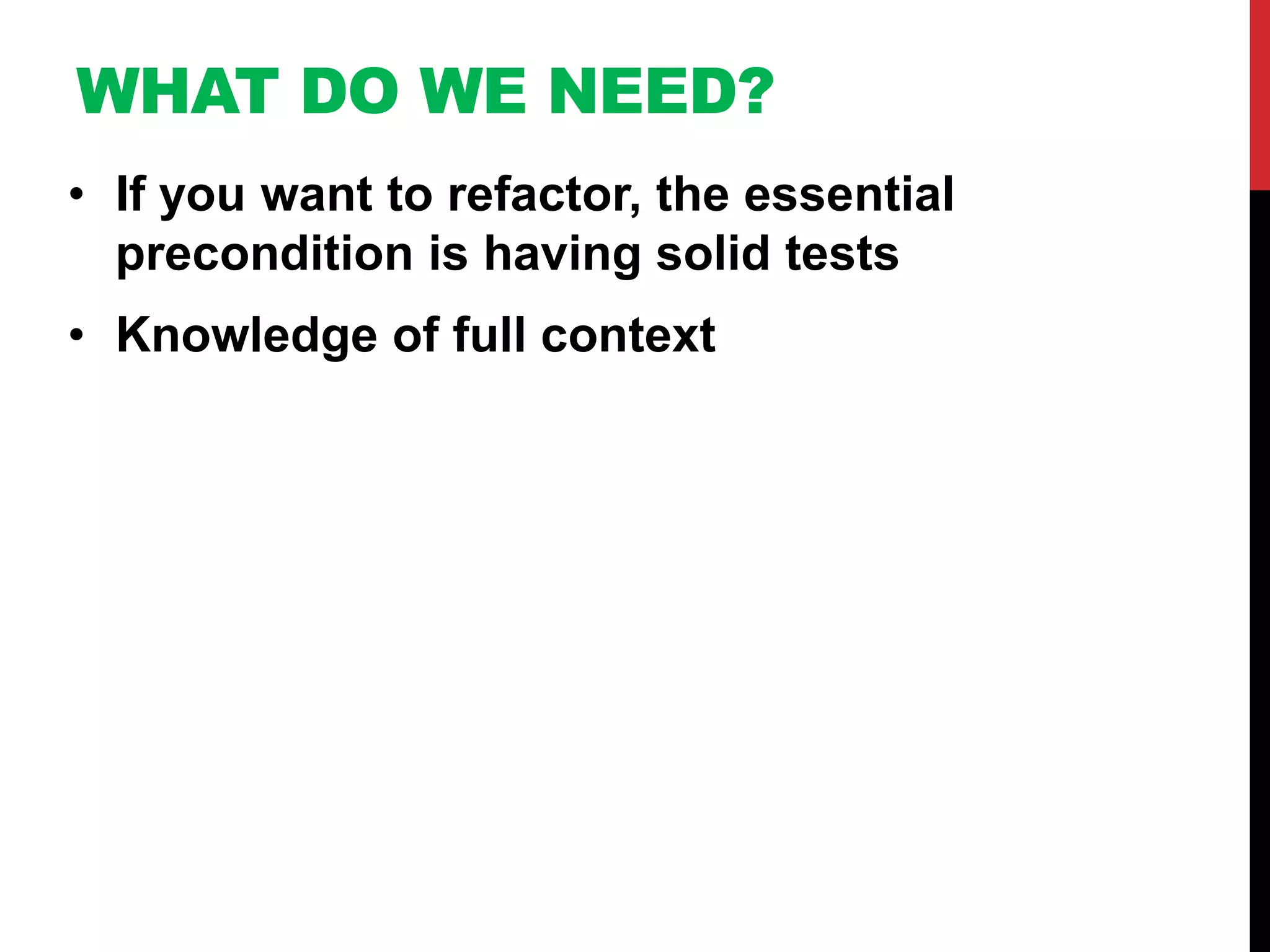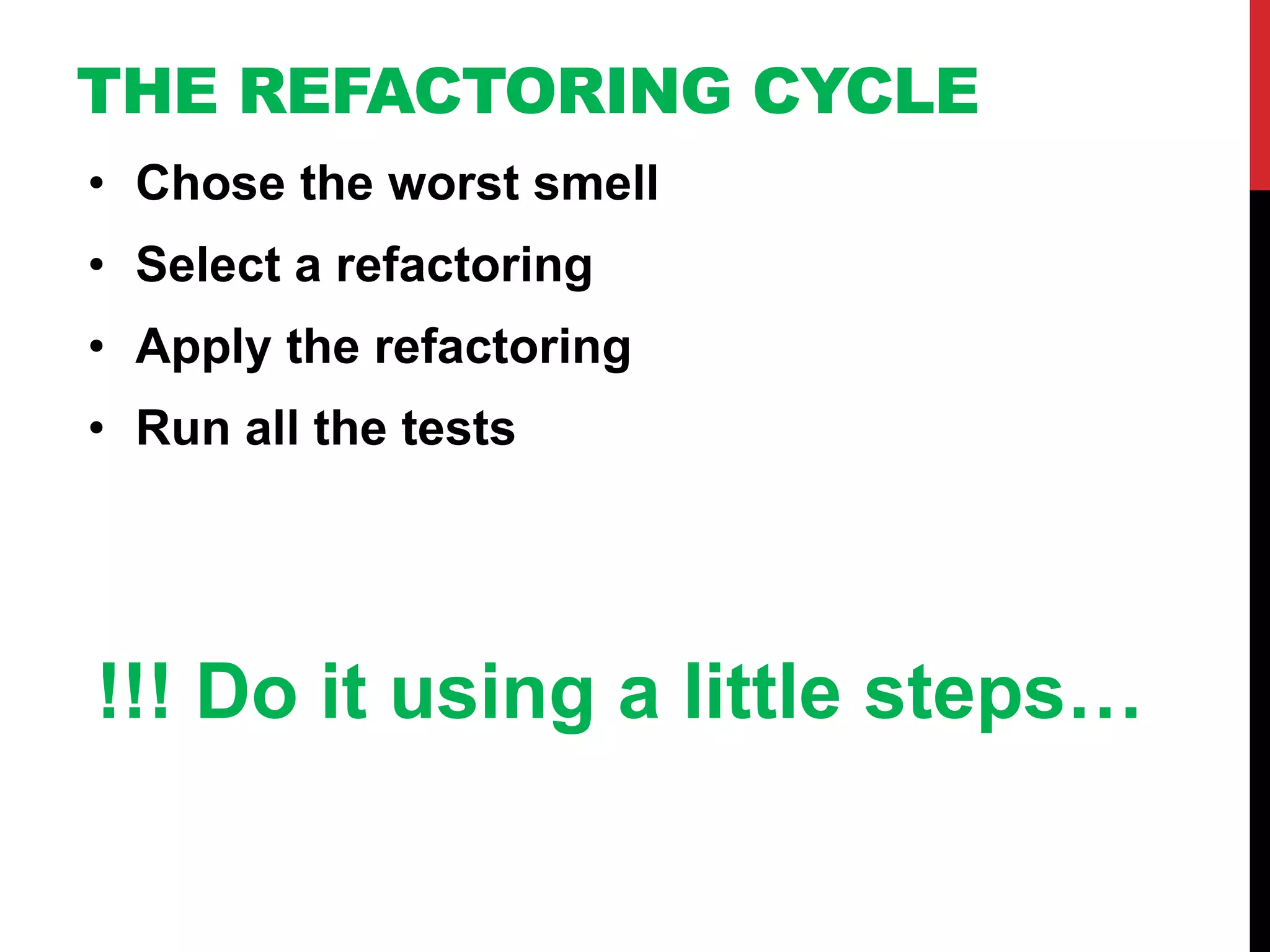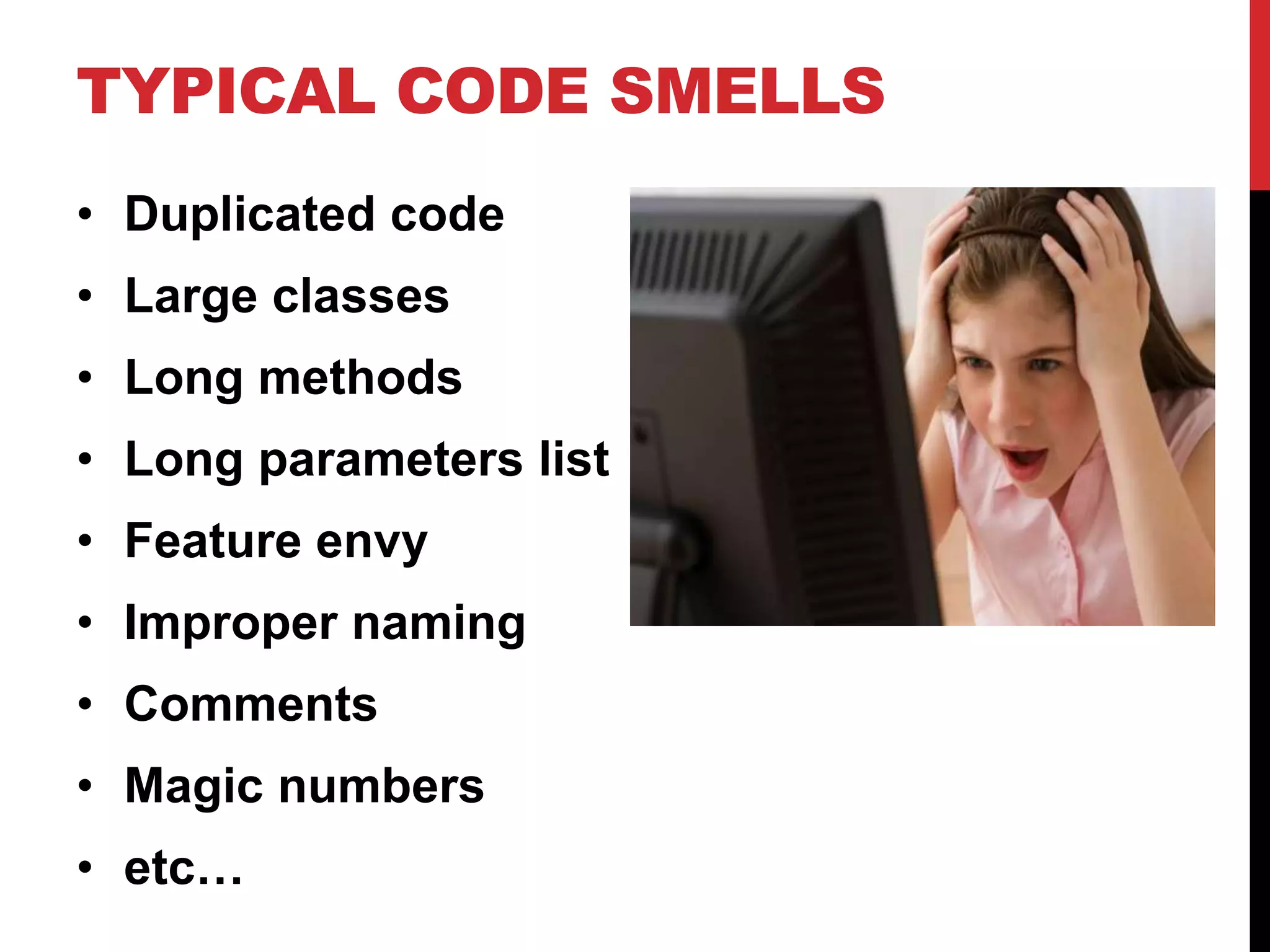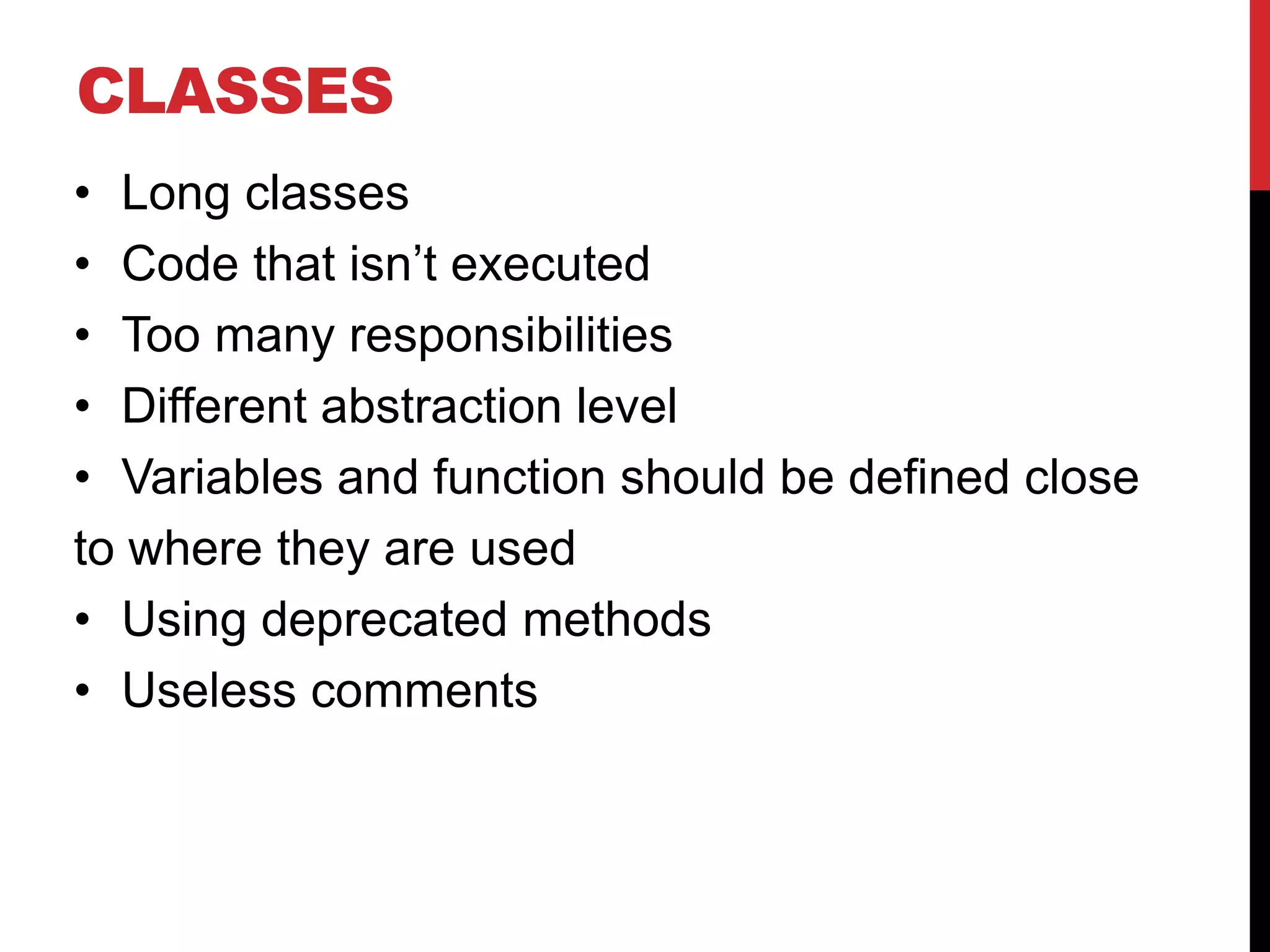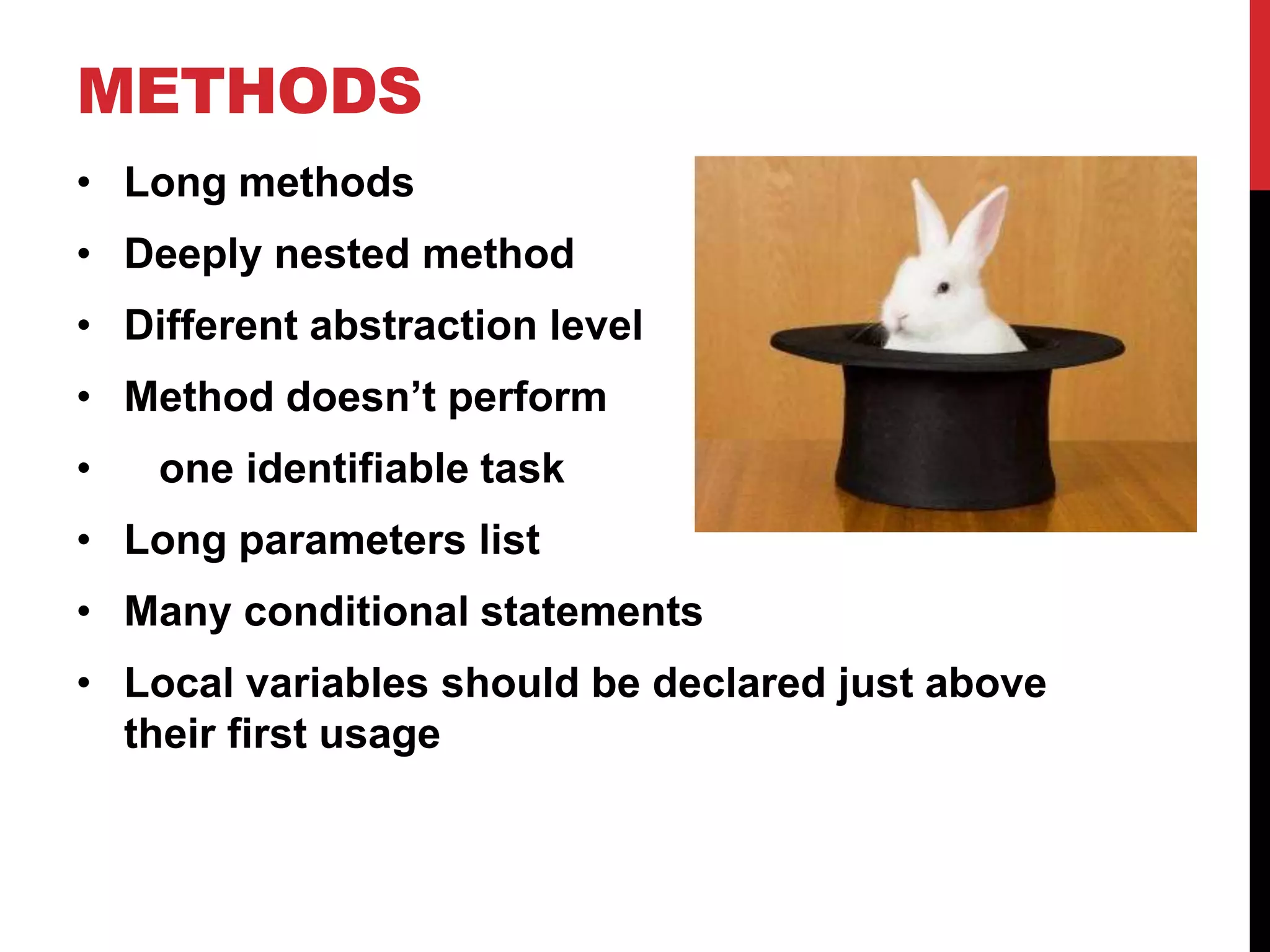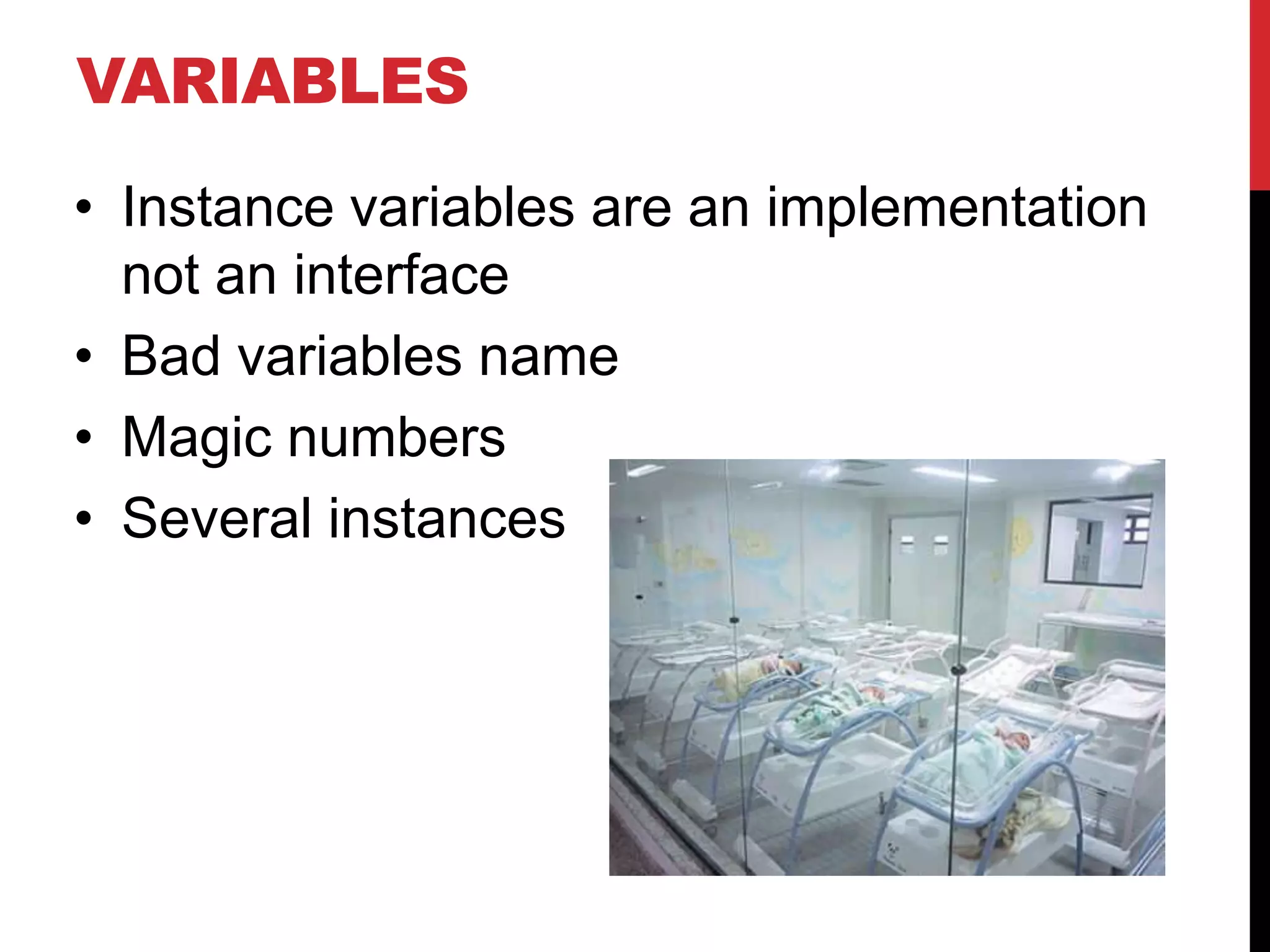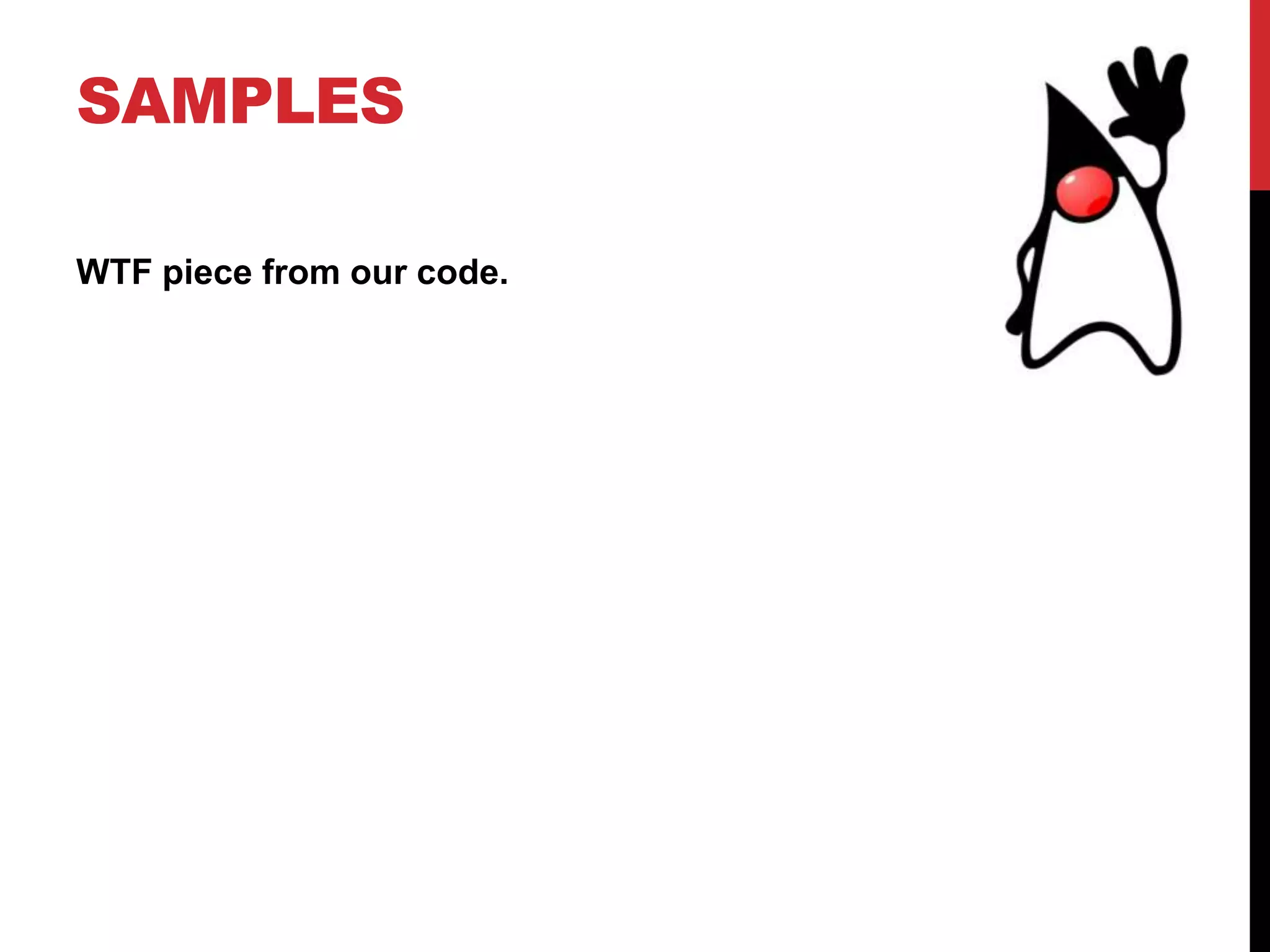This document discusses refactoring code to improve its quality. It begins by explaining that refactoring is about fixing code by improving its structure and design while maintaining its external behavior. It then discusses what makes code good or bad, focusing on qualities like robustness, simplicity and being easy to change. Common code smells that make code hard to understand and modify are identified, such as duplicated code, large classes and long methods. Refactoring is defined as changing code without changing its external behavior but improving its internal structure. Reasons for refactoring include improving maintainability and making code easier to understand and modify. The document outlines a refactoring cycle of selecting a code smell to address, choosing a refactoring technique,
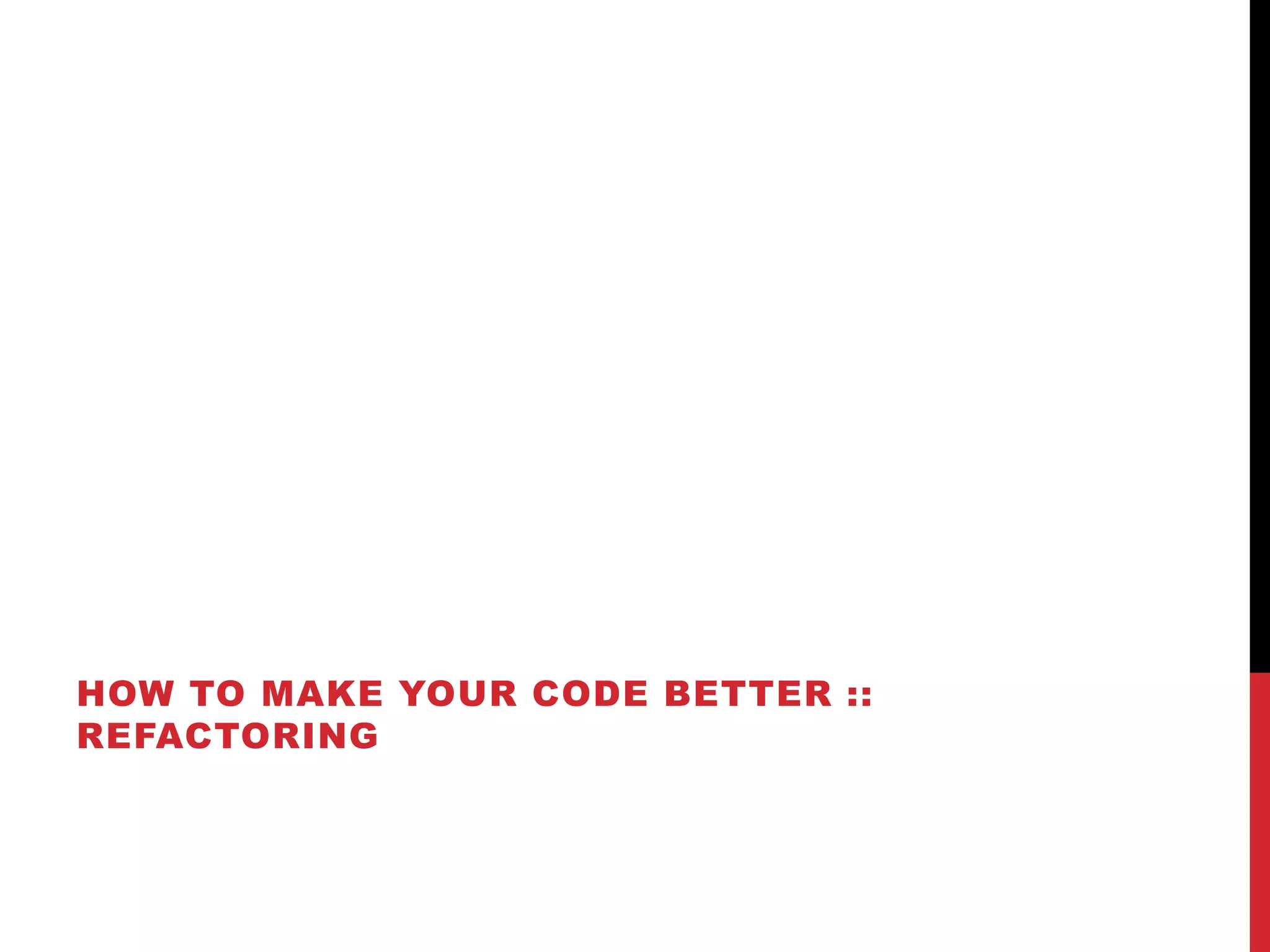
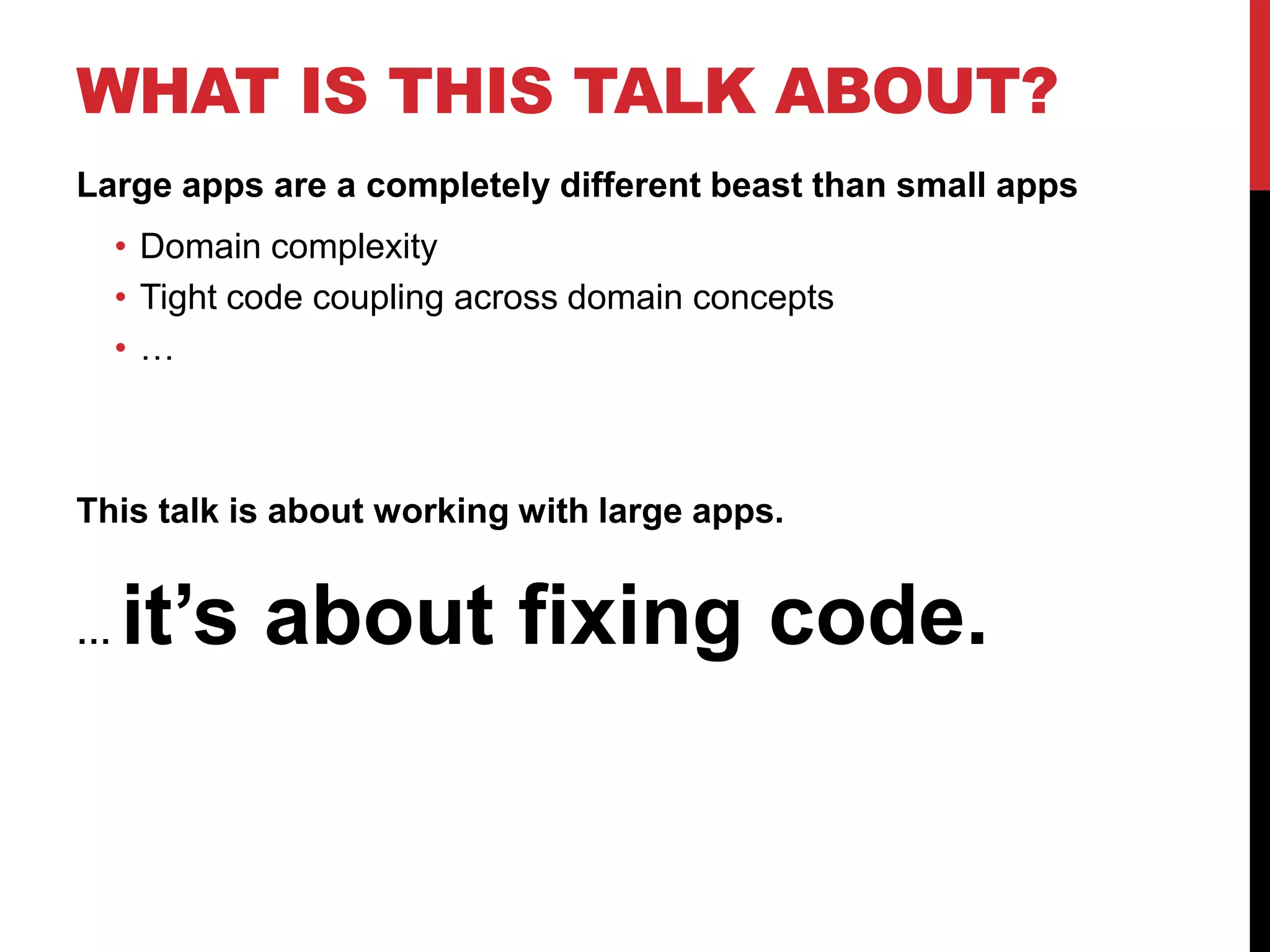

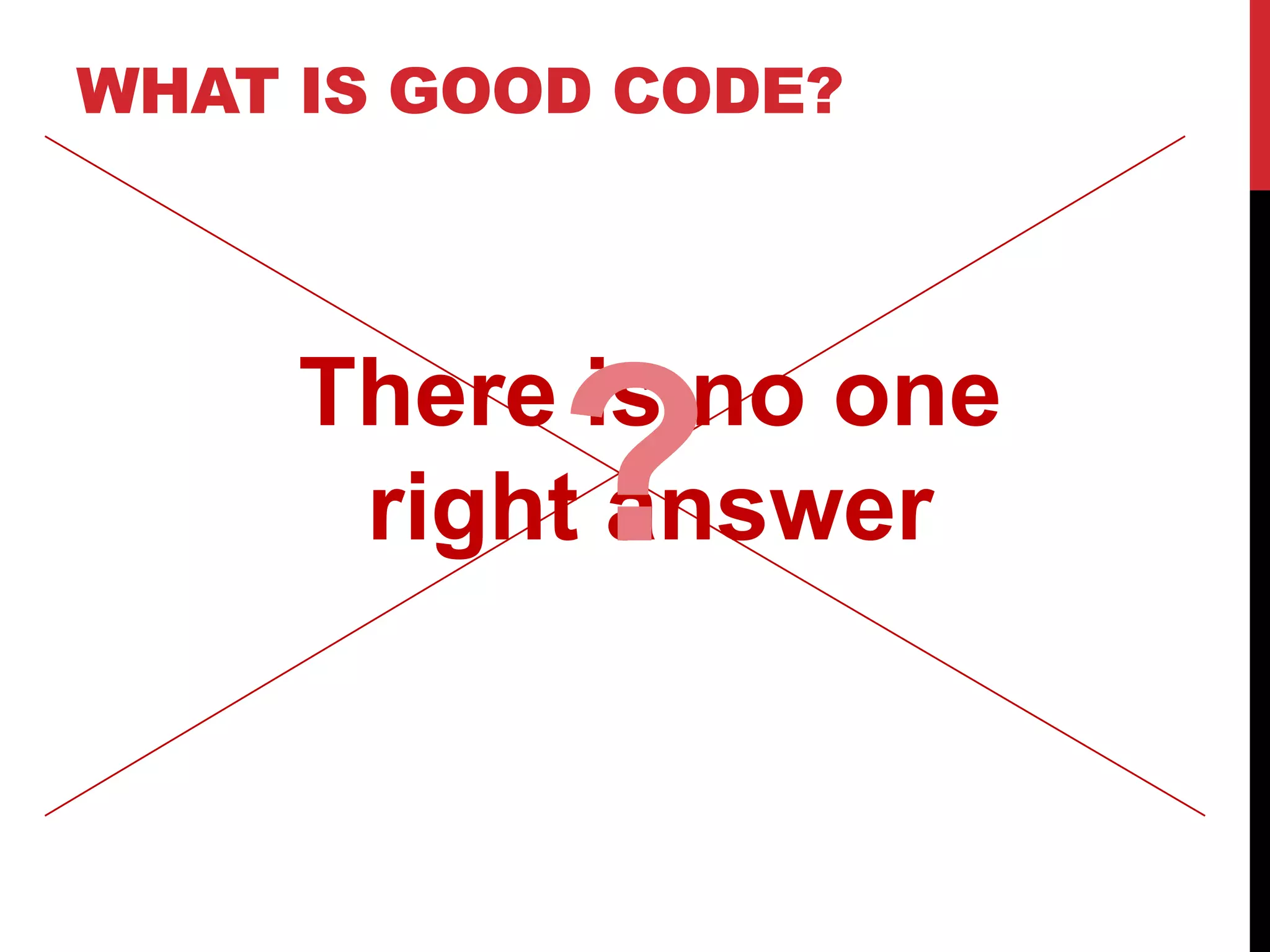


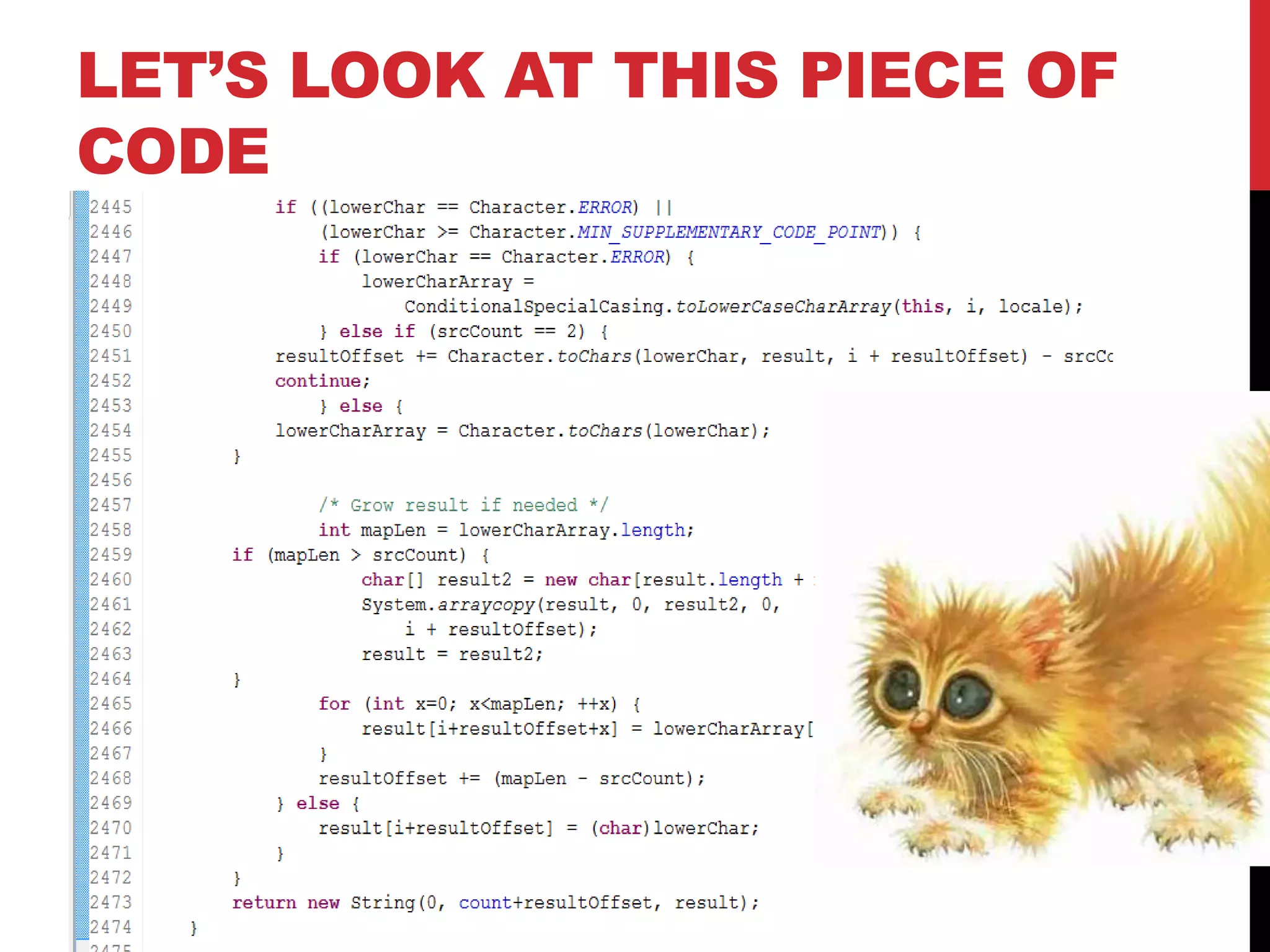
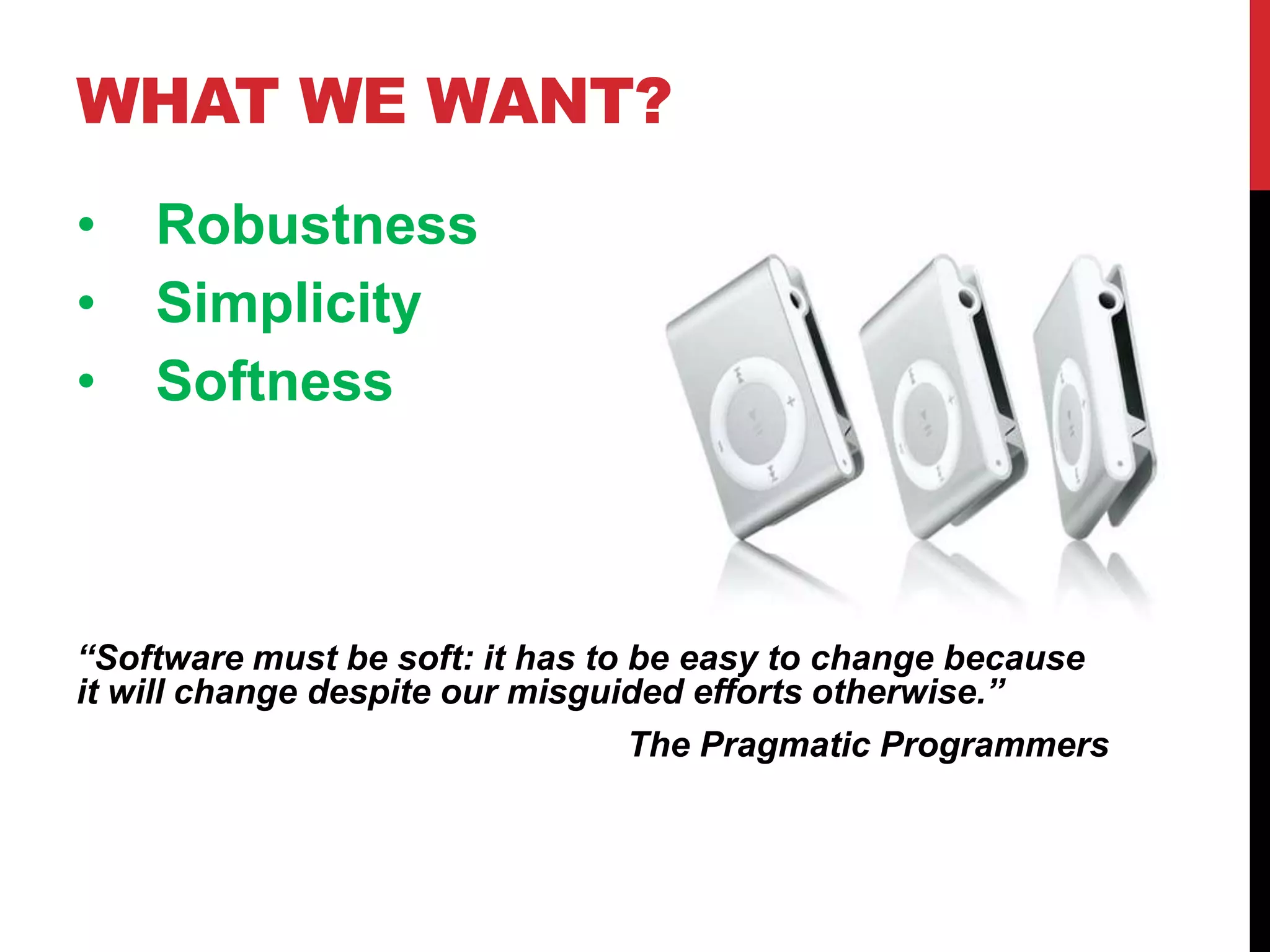
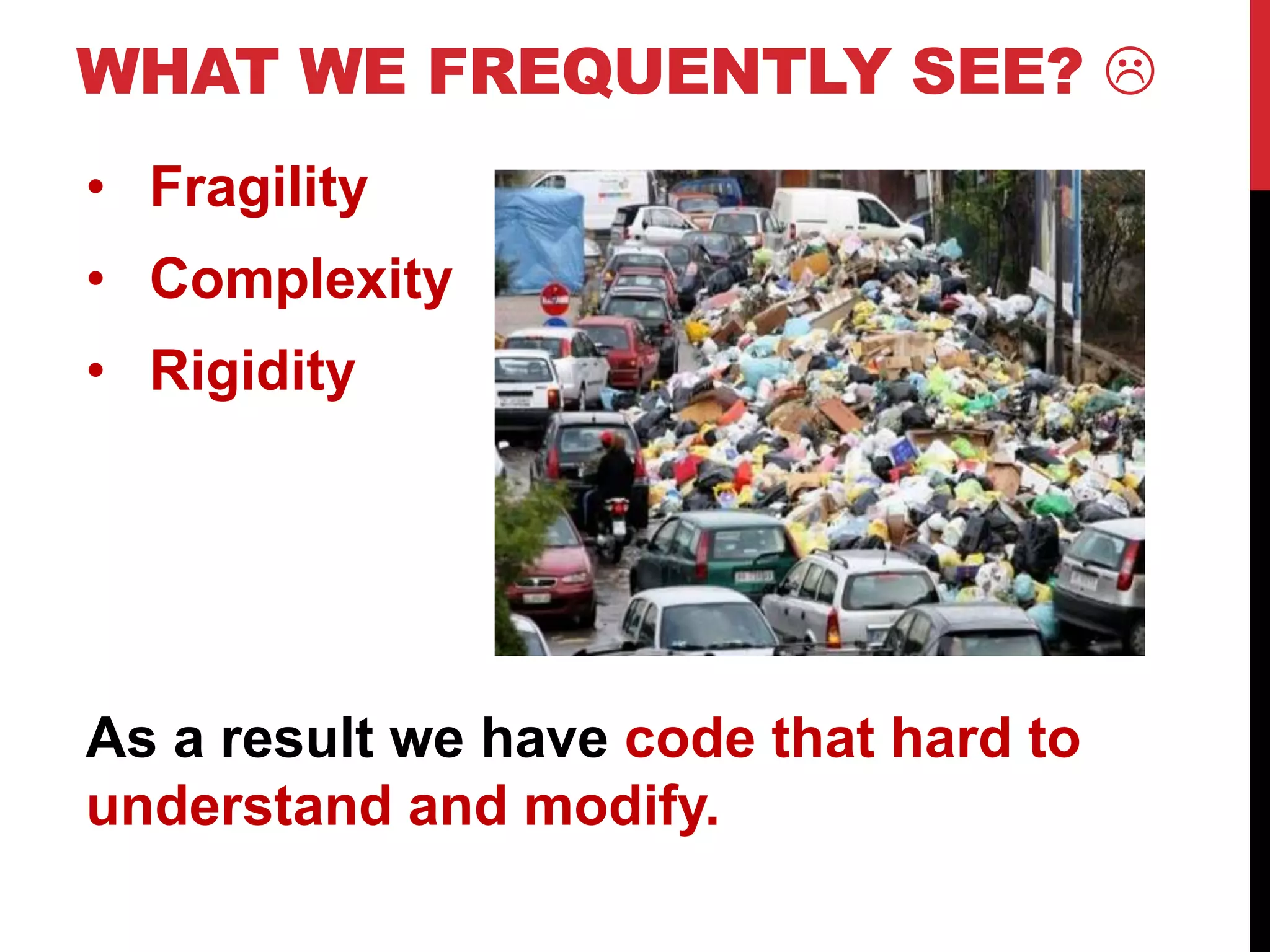
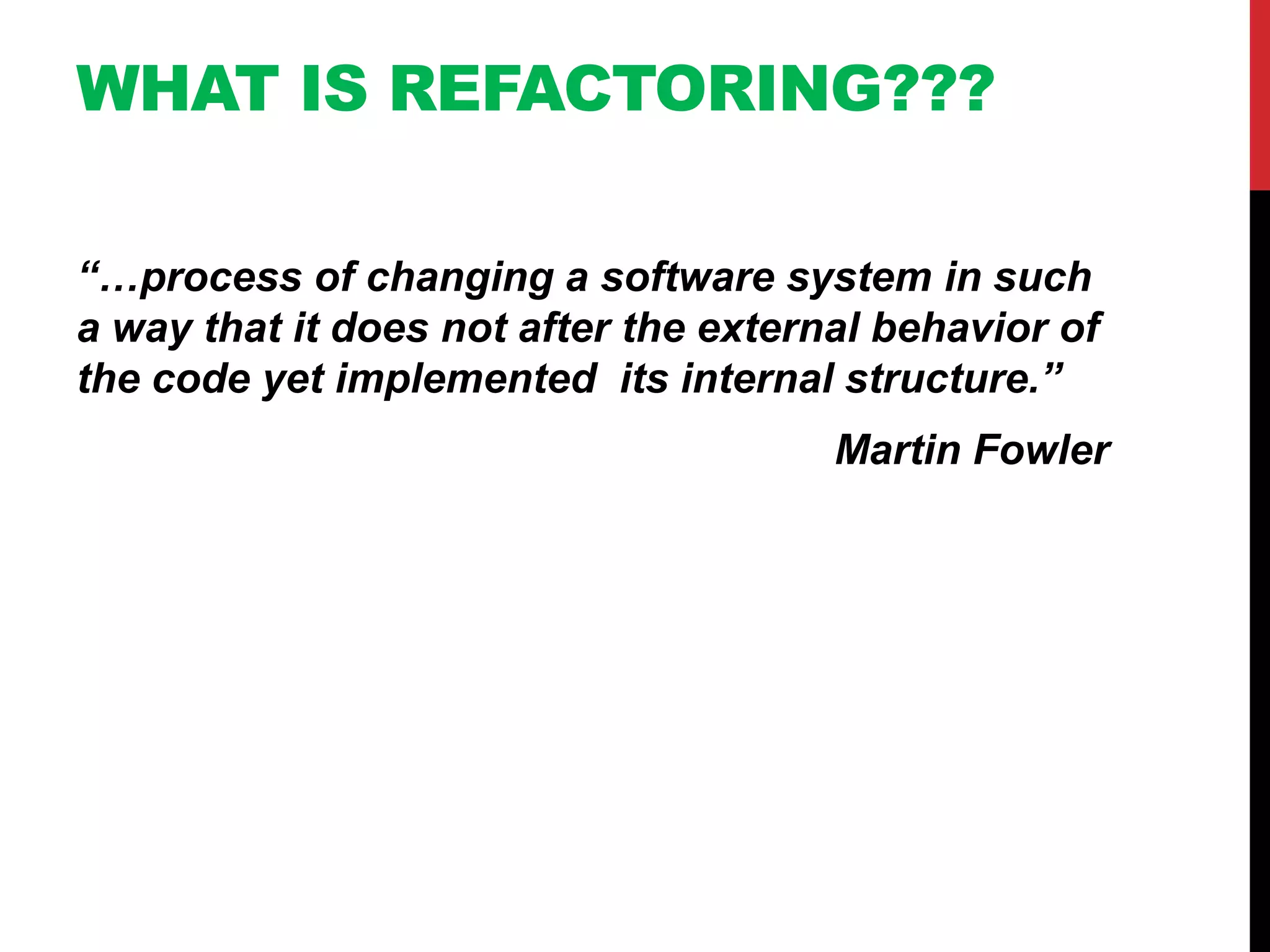
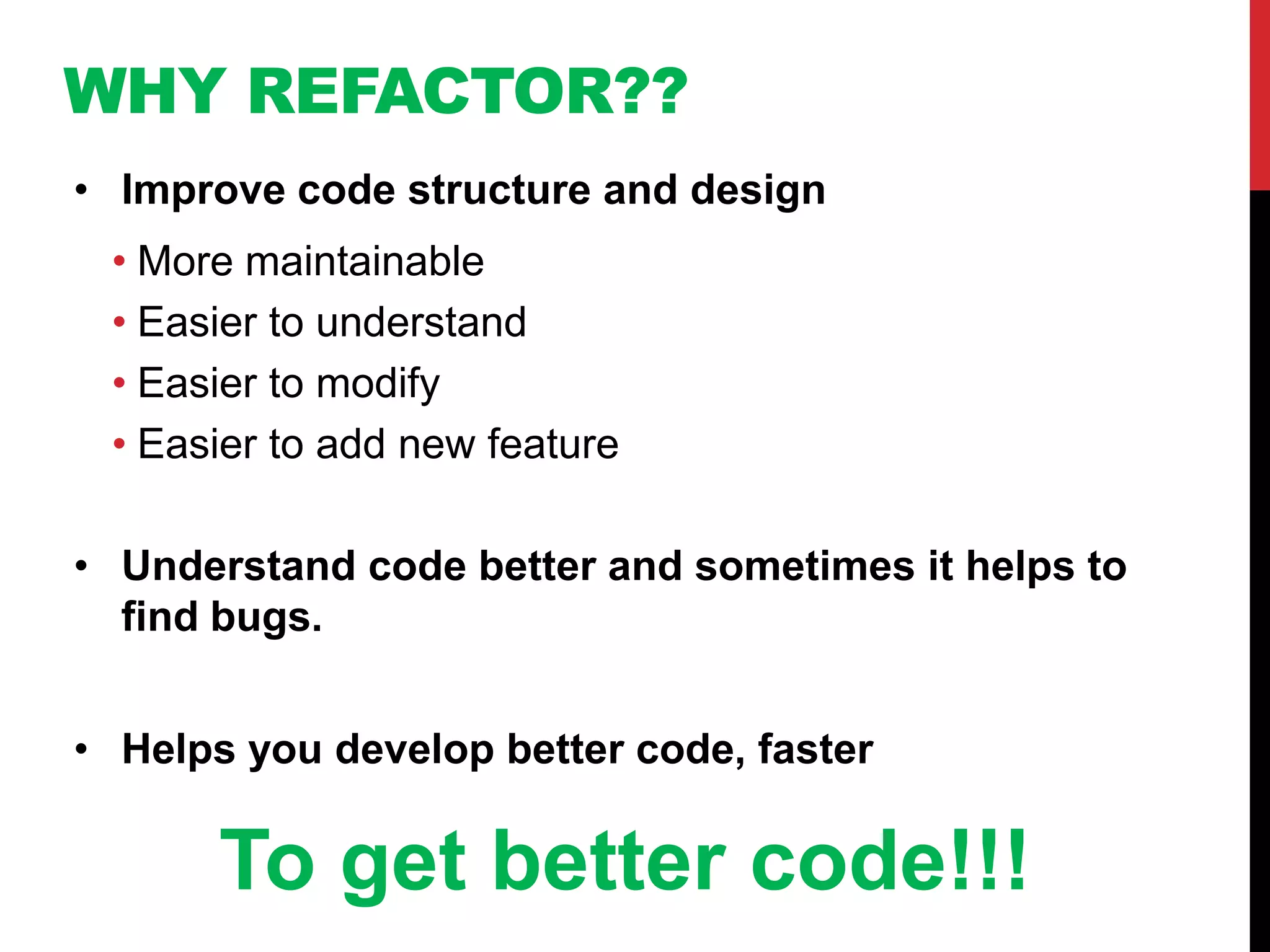
![WHEN REFACTOR
• You add new features and the code is hard to
understand
• You fix bug
• During code review
[!!!] Do not add new features during refactoring
… and sometimes you should throw things out
and start again.](https://image.slidesharecdn.com/refactoring-111115000534-phpapp01/75/Refactoring-12-2048.jpg)
